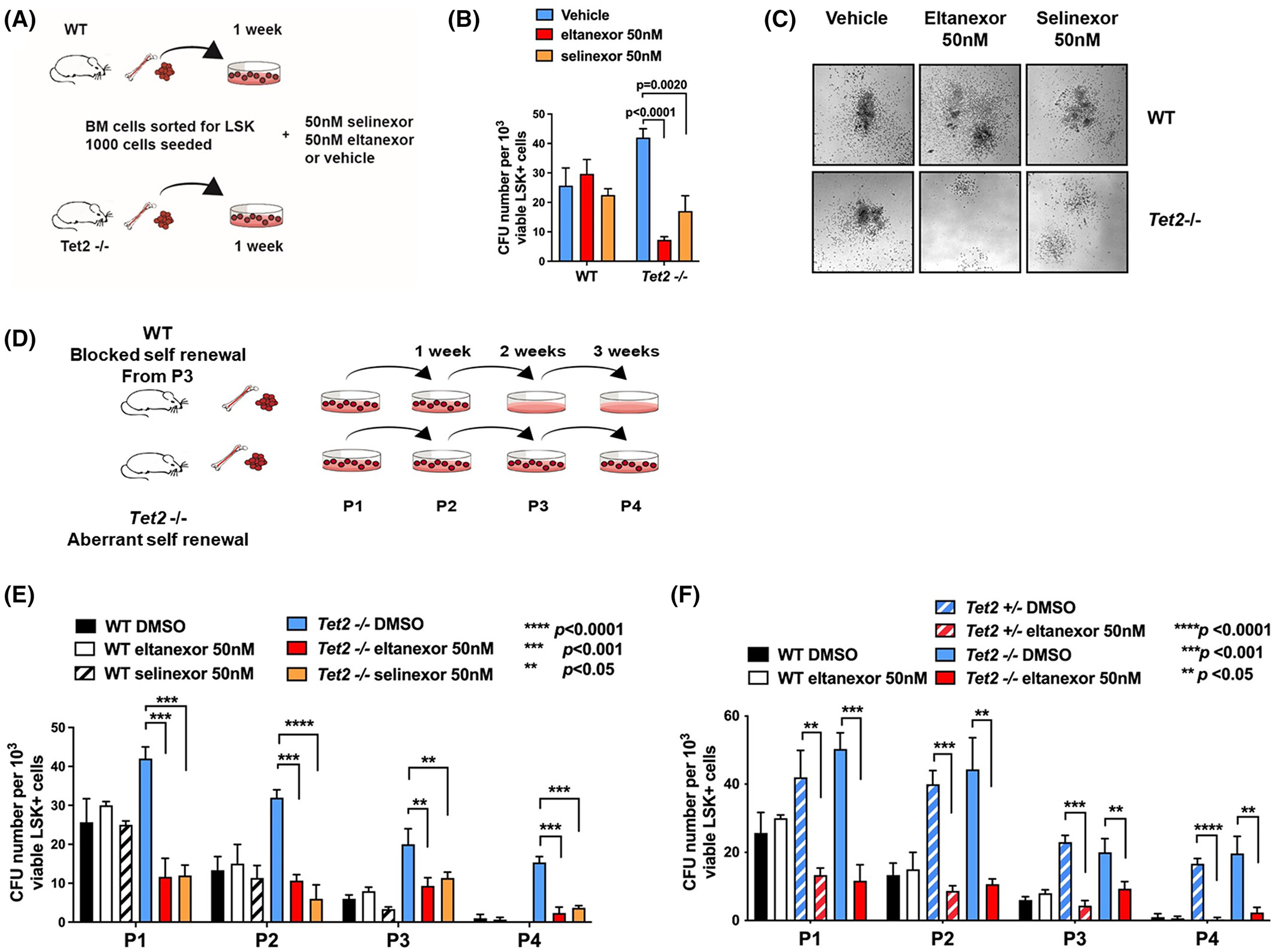Image
Figure Caption
Fig. 6
Exportin 1 (XPO1) inhibitor treatment selectively and dramatically decreases colony formation and the serial replating ability of Tet2-mutant murine haematopoietic stem and progenitor cells (HSPCs). Schematic representation of colony-forming unit assay. Bone marrow cells of wild-type (WT) or Tet2-mutant mice were sorted for Lin−Sca-1+c-Kit− (LSK) and 1000 LSK+ cells were plated on methylcellulose containing eltanexor, selinexor or vehicle. (B) Relative numbers of colonies of murine (WT) or Tet2-deficient HSPC cells surviving after treatment with selinexor or eltanexor. The number of colonies was determined after 7 days of culture in methylcellulose-containing drug or vehicle. Selinexor and eltanexor reduce Tet2-mutant colonies by ~50% or ~ 75% respectively but have little effect on normal HSPC plating efficiency. (C) Representative colony morphology with or without drug treatment. (D) Schematic of serial re-plating of murine WT or Tet2-deficient LSK+ HSPC cells in methylcellulose. Cells were treated with selinexor (50 nM) or eltanexor (50 nM) at each of the four passages (P1–P4). Total number of colony-forming units (CFU) was determined 7 d after each passage. (E, F) Relative number of colonies of murine WT or Tet2−/− € or Tet2+/− (f) HSPC cells surviving after treatment with selinexor (E) or eltanexor (E, F) at each of the four passages (P1–P4). Wild-type colonies do not re-plate beyond three passages (P3). Tet2-deficient HSPCs exhibit increased re-plating capacity, which is dramatically decreased by selinexor or eltanexor treatment.
Acknowledgments
This image is the copyrighted work of the attributed author or publisher, and
ZFIN has permission only to display this image to its users.
Additional permissions should be obtained from the applicable author or publisher of the image.
Full text @ Br. J. Haematol.

